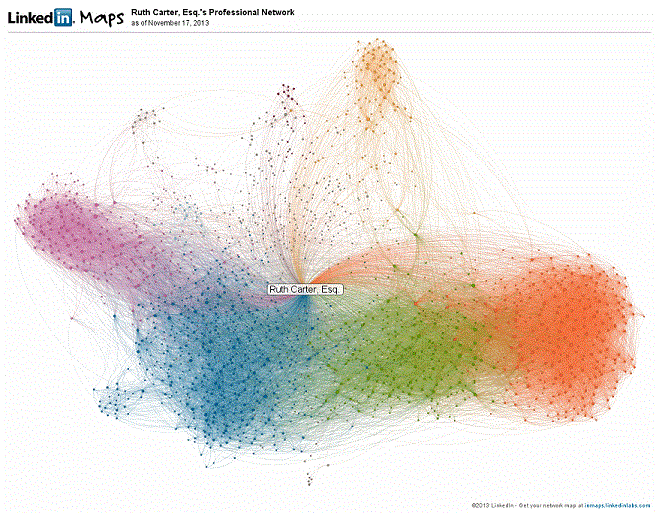I had the pleasure of being part of LexisNexis’ webcast on how to use LinkedIn for law students. I was there to talk about how I use LinkedIn in my professional life. We had over 1000 students tune in for the webcast and they had the option to ask questions during the show, but we didn’t have time to get to all of them, so here are my responses to some of those questions.

How Important is it to Include my Photo in my Profile?
Very important. If you don’t have a photo on your profile, I will assume that you haven’t been active on LinkedIn since the day you created your account. Why would I want to connect with someone on a platform where they don’t want to connect with anyone? I don’t. So yes, you need to put your photo on your profile, and make a picture of you, not your pet or your kids. This is a professional forum. (And some of us are really bad at remembering what people look like so having your photo on your profile is a big help.)
I’m hesitant to Enable Endorsements because of the potential Ethical Problems. Any Advice?
I enabled endorsements but I don’t give them a lot of weight in general because people can endorse you for skills that they have no actual knowledge if you have them. If someone tries to endorse me for a skill I don’t have or a topic that is outside my areas of practice, I don’t allow it.
How much of a Job Description should I include for each Position that I have held? I do not want it to be a Restatement of my Resume.
I think mine are basically cut and pasted from my resume. If you don’t want to do that, be as brief as you can while giving an accurate description of each job.
How do I Tailor my Profile to keep my Options Open and Not Turn Off Potential Employers or those I am looking to Maximize Opportunities with even when they Conflict?
Keep your descriptions focused on your skills and interests that will appeal to most people. Avoid the specifics that might make you a turn off to a particular audience. For example, you can say you’re interested in a certain practice area without stating which side of the fence you’re on.
How do you Feel about the “Request an Introduction” function in LinkedIn?
Introductions are basically endorsements so definitely ask for introductions if you know someone who knows the person you want to meet. On LinkedIn, I connect with anyone who doesn’t look like spam, and a lot of other people do the same. Don’t be upset if you request an introduction and the person responds that they can’t help you because they don’t actually know the person you want to meet.

How Often should I Post to LinkedIn?
As often as it’s relevant. It may not be relevant to post on a regular basis. I do because I post links on my blogs and videos, but not much more than that.
How do we Connect when we Don’t Know the Person? LinkedIn requires you know the person as a Friend, Colleague, etc. when attempting to Create a Connection.
I’ll say I’m a friend even if I don’t know the person but I personalize the request to connect so they know why I want to connect with them. This appears to be a generally accepted practice.
Do you Recommend putting Less ‘Formal’ Forms of Contact (such as Twitter) on LinkedIn?
I would put all your contact information for all the forums where you want to connect with people. Always include an email address and they it’s your choice to add your phone number, Twitter handle, blog, etc.
When should I get a LinkedIn Account?
Yesterday.
Always remember that LinkedIn, like all social media platforms, is a communications tool. Having an account is not enough; it’s what you do with it that matters.
I hope this has been helpful. If you want to connect with me on LinkedIn, feel free.